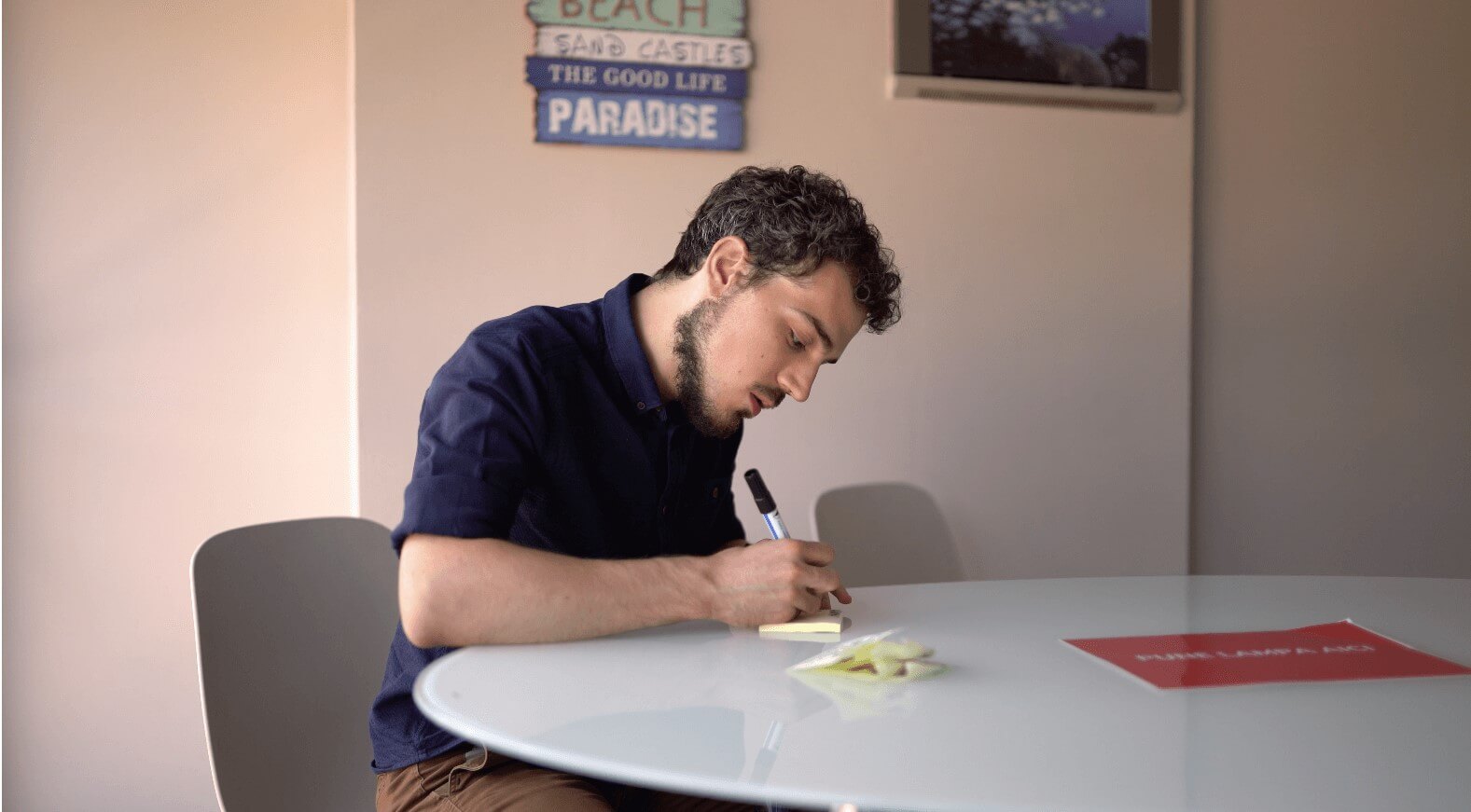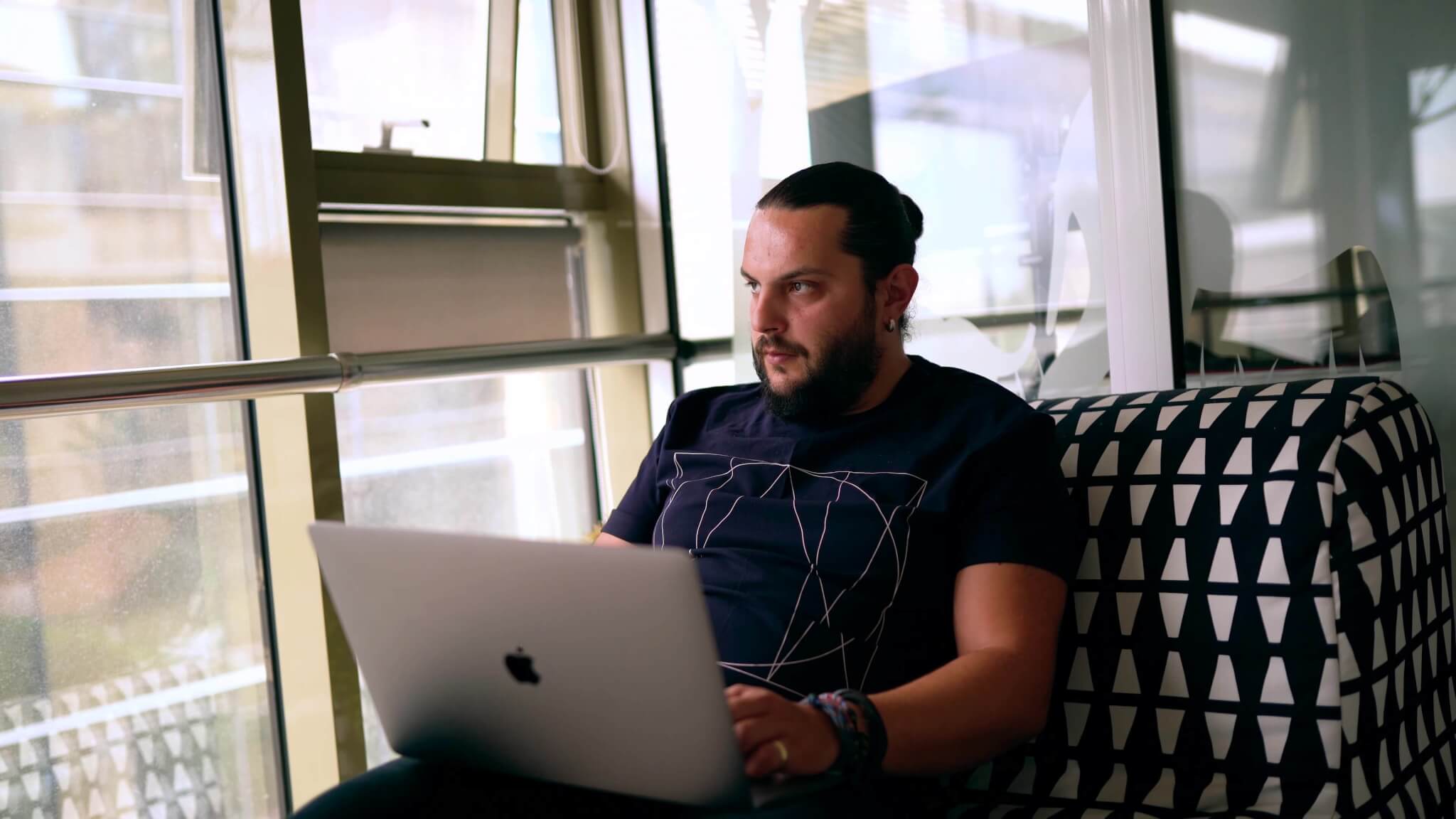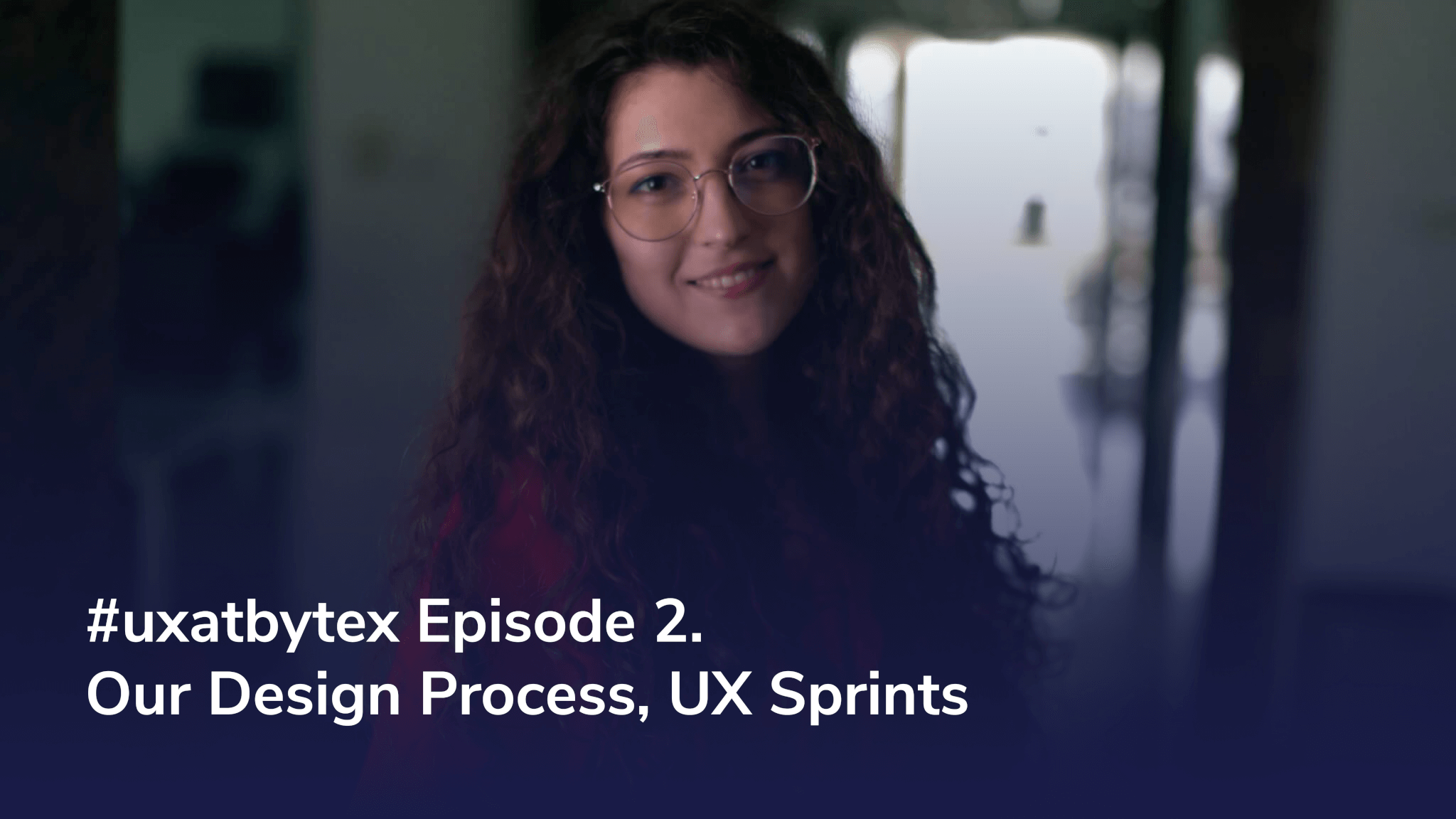After introducing you to our designers, and taking a look at their design process and UX sprints, it’s time to address one of the most interesting topics pertaining to UX design: ideation. According to Interaction Design, ideation is the activity where one generates ideas through a variety of sessions and techniques.
Alex will explain how an ideation session can be put together, and then he’ll jump right into four fun exercises that can boost creativity and reveal your best ideas (oddly enough, by also pointing out your worst ones).
For the entire series, please check out our Youtube channel. Video transcript below.
Alex: Hello, and welcome to UX at bytex, the video series dedicated to the intricacies of UX design. My name is Alex and today we’ll talk about the ups and downs of ideation, a crucial step of the design thinking framework. I’ve prepared some interesting exercises for you, so keep on watching!
Design thinking is a way of approaching a problem, that teams use to understand the product, and come up with innovative solutions. If you’ve watched our last week’s video, Iulia described our five-step process that is a variation of this framework.
Each step has its own merit, and ideation is about coming up with as many ideas as you possibly can. Once you have all your ideas in order, analysis will follow, so that you sort up which ideas to pursue.
Whenever you’re going through an ideation session, I’d like you to keep one thing in mind: your goal is quantity and there are no bad ideas. Crazy is welcomed, and even encouraged. It’s much easier to scale back a crazy idea to something useful than it is to find a user for a solution that no one needs.
There are four easy to use UX ideation techniques that will help you accelerate your design process in no time. The third one has even gotten me out of a pickle numerous times.
For all of these four exercises, we’ll refer to an imaginary app. Let’s say a mobile payment app, and let’s call it SpendIt.
Now, let’s begin with our end goal. Each of your ideation sessions should start with laying out some of the basics, such as your long term goal and the difficult questions that might be answered. Some of them could be: “What are our long-term goals?“, “Who are our users?”, “What difficulties could we be facing?”. After figuring out all this, we can put everything in a form of a single question that will be your guide through the whole ideation process. In the case of our mobile app, we could go for something like: “What can we do to increase awareness of our mobile app?”
Next, we have brainstorming, but with a twist, in the form of “How Might We” questions. Their purpose is to break down your previous question statement into smaller, more actionable pieces. How you do it is very simple: you just take a piece of paper and write on it “How might we . . . ?”. From there on you continue by asking everything that comes to mind. For example, in the case of our mobile payment app, we could ask ourselves things like: “How might we promote our app?” “How might we keep users using our app?”. All these are very valid questions and you should continue writing them until you’ve covered most, or everything that comes to your mind. After this, you’re going to notice that some patterns emerge. You’re going to have to group the questions that are similar and then sort them by importance. What we hope to achieve through this is to prioritize our work in a friendly, more approachable way.
Now it’s time for my favorite: Crazy 8s. I use this exercise whenever I’m feeling stuck and no other idea comes to mind. The idea of it is pretty simple: you take a piece of paper, split it into 8 different parts and then, in those parts, you try to come up with 8 possible solutions to the problem you’re facing. The “Crazy” in Crazy 8s refers to the pace, not the nature of the ideas you’re going to come up with, so try to not go over 60 seconds per section. Sometimes this exercise leads to a revelation, other times, not so much, but the idea of it is that you’re going to come up with 8 possible solutions in less than 8 minutes, which – in my opinion – is pretty great.
Moving on and keeping things fun, the next exercise is called “Worst Possible Idea”, and the name is pretty self explanatory. You’re going to be tasked with coming up with the worst possible solution for the problem in question. I feel like this exercise has some merit, because it’s much easier to ask yourself “Hey, how worse could it be?” instead of trying to come up with better and better solutions. You never know, looking at the worst possible idea could lead you to your next best one! Let’s say, in the case of our mobile app, we could ask ourselves something like “What if our mobile payment app would *give* people money when paying, instead of taking it?” How cool would that be?
That’s pretty much it for today. And in the words of many famous youtubers, “Like, Share, Subscribe!” and join us next week, when Mihai will provide us info about how collaboration works, as he sees it after 12 years as a UX designer. So, see you next week!
__________
Interested in working with our designers? Drop us a line at hello@bytex.net and we’ll get back to you with all the information you need.


